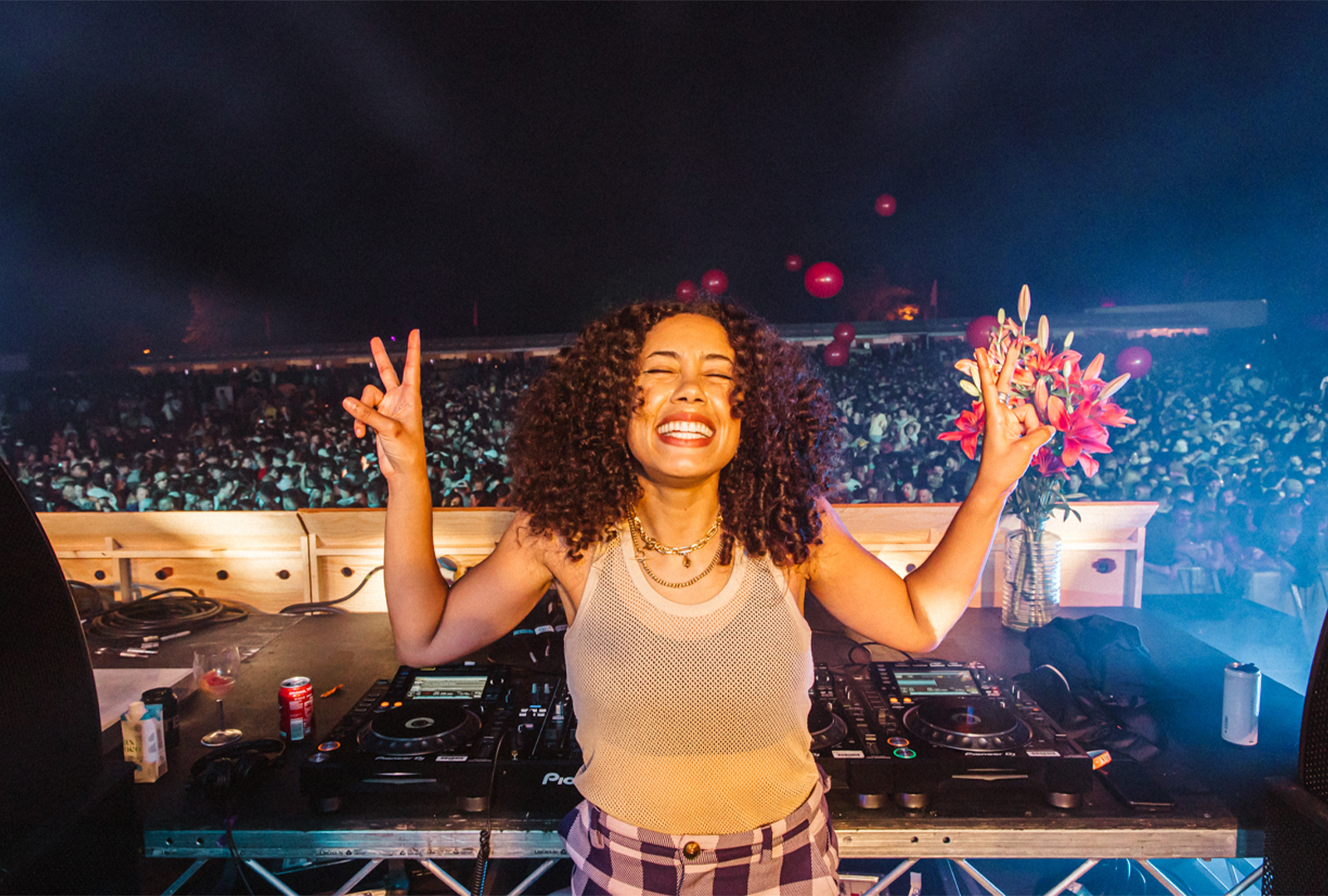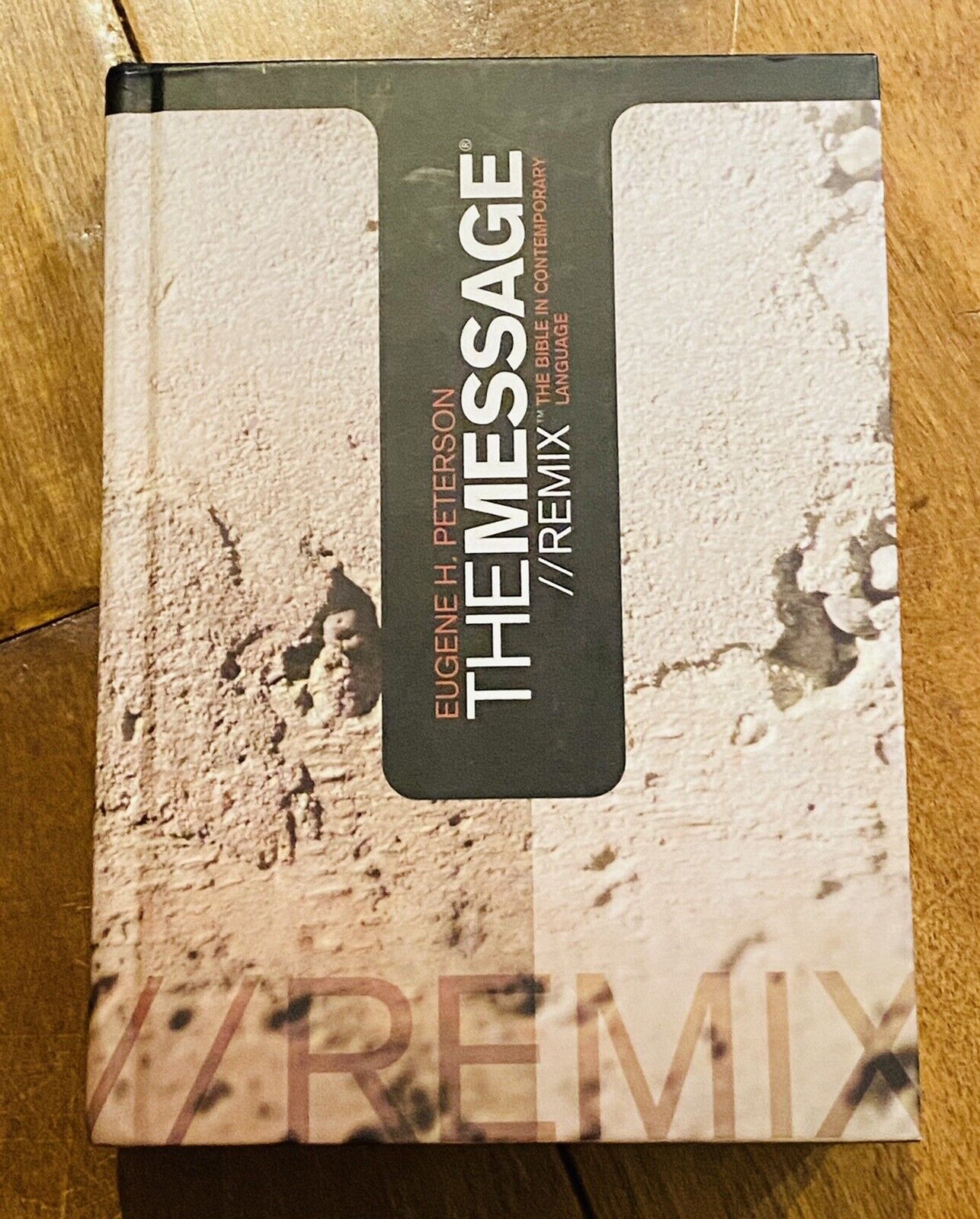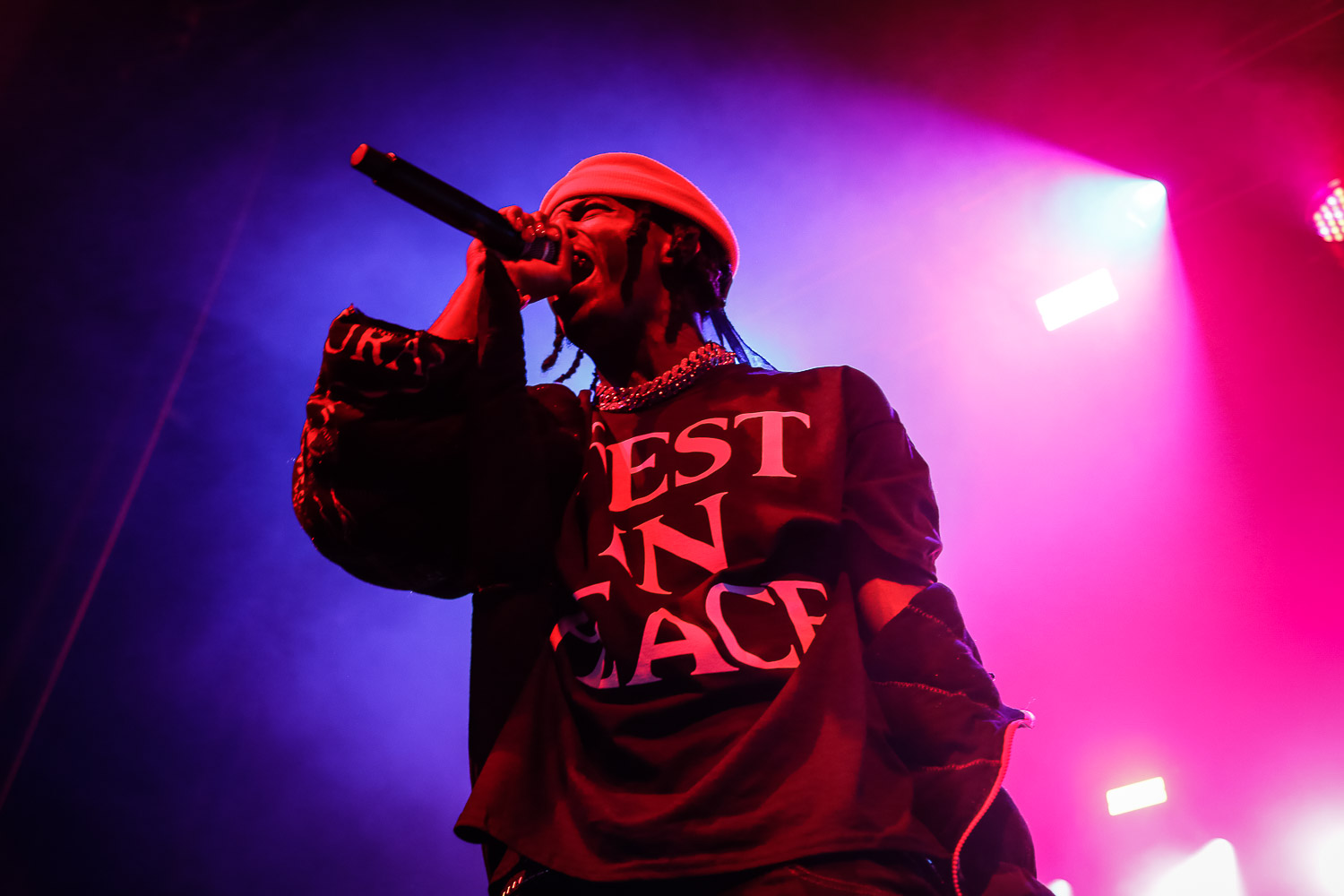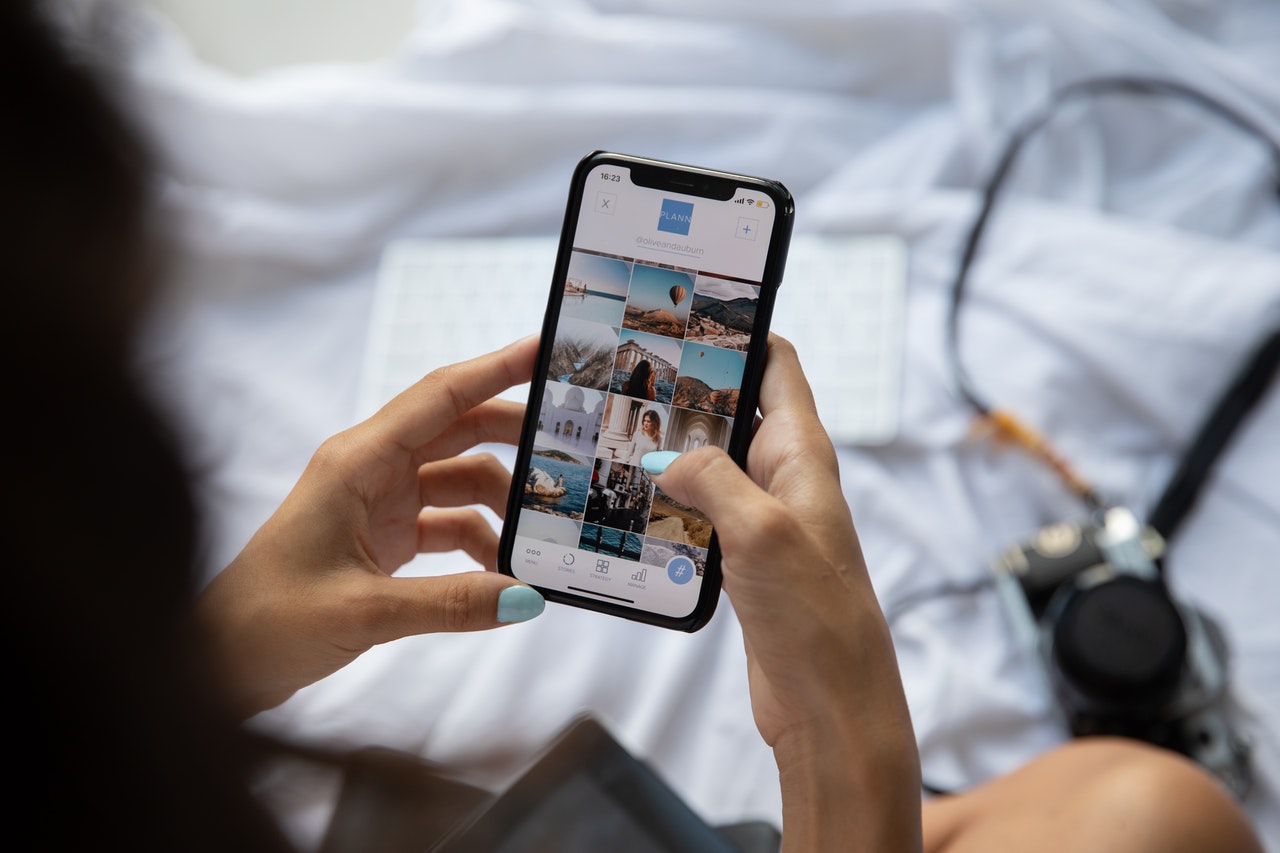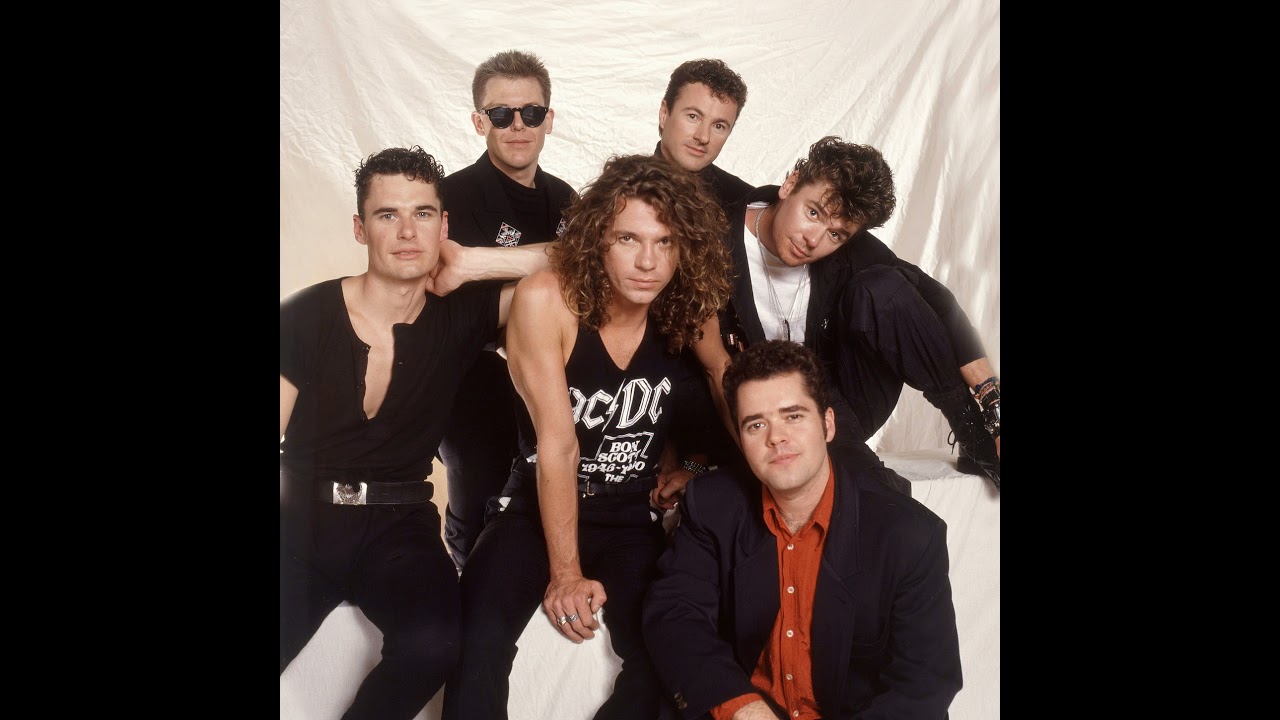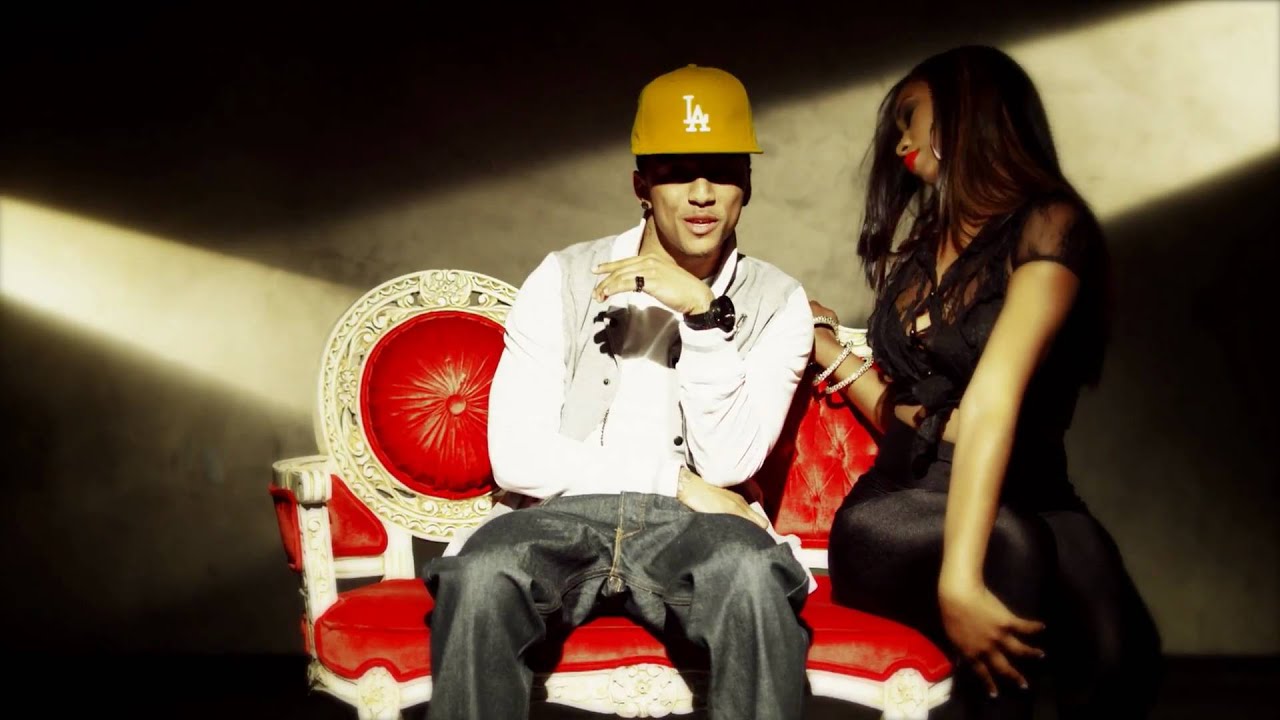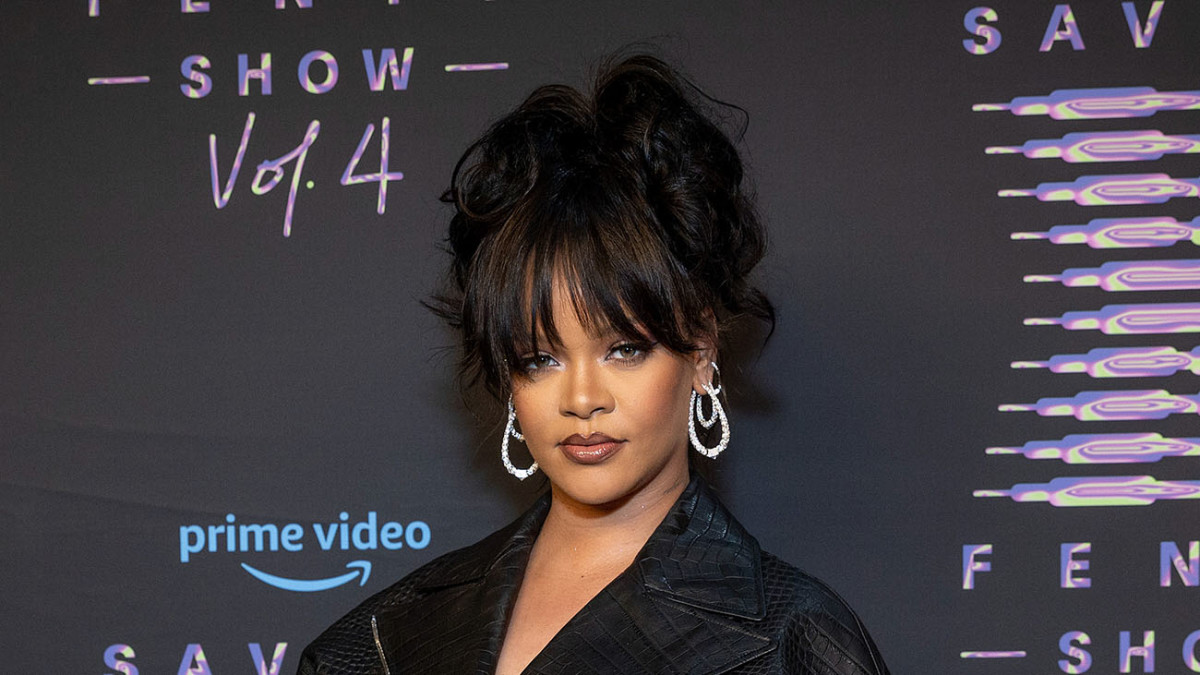Home>Production & Technology>Remix>What Is The Remix
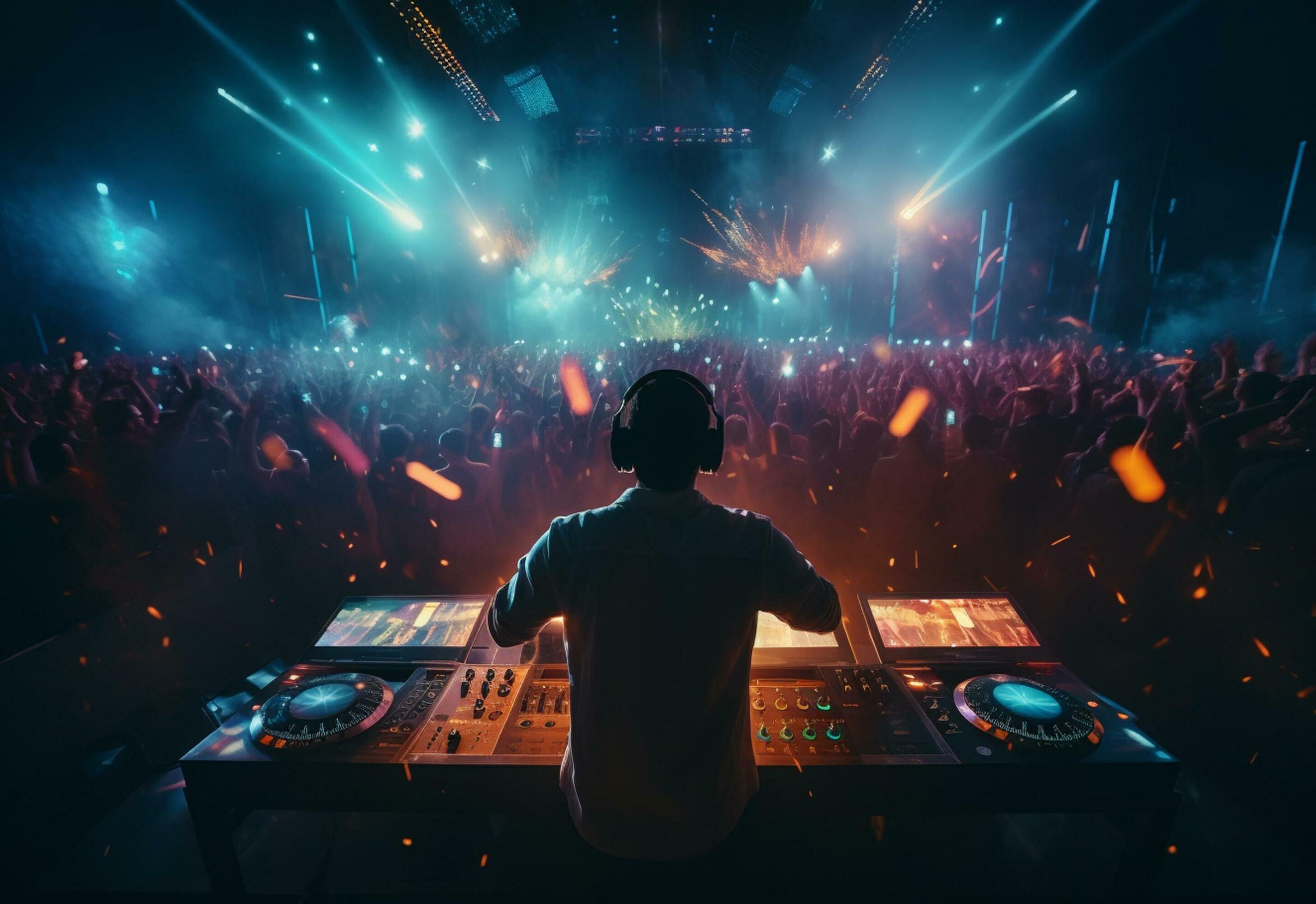

Remix
What Is The Remix
Modified: March 11, 2024
Find out what a remix is and how it can transform your favorite songs. Discover the power of remixing in music production.
(Many of the links in this article redirect to a specific reviewed product. Your purchase of these products through affiliate links helps to generate commission for AudioLover.com, at no extra cost. Learn more)
Table of Contents
Introduction
Remixing has become an integral part of modern culture, influencing everything from music to art, fashion, and even technology. But what exactly is a remix? In its simplest form, a remix refers to the process of reinterpreting, rearranging, and altering an original piece of work to create a new and unique version. This creative practice has gained immense popularity in recent years, fueled by advancements in technology and widespread access to digital tools.
Remixing allows artists, designers, and creators to express their creativity by adding their own personal touch to existing works. Whether it’s reimagining a hit song, repurposing visual art, or even reinventing software, remixing provides a platform for innovation and self-expression. The concept of remixing extends beyond just one medium; it has evolved into a broader cultural phenomenon that promotes collaboration, experimentation, and the free flow of ideas.
Nowadays, remixes have become a common occurrence in the music industry. Artists often release remixes of their own songs, collaborating with other musicians to create fresh interpretations of familiar tracks. Additionally, remixes can extend the lifespan of a popular song, introducing it to new audiences and breathing new life into its sound.
Remix culture also extends to the world of visual arts, with artists taking inspiration from existing works and incorporating their unique perspective into the creation of new pieces. This blending of ideas and styles has led to the emergence of exciting and boundary-pushing art forms.
Moreover, the rise of digital platforms and social media has made remixing more accessible than ever. Anyone with a smartphone or a computer can experiment with remixing, using various software and online tools to create their own unique content. This democratization of remixing has fostered a vibrant community of creators, who constantly push the boundaries of what is possible.
However, as remixing becomes more prevalent, it also raises legal and copyright concerns. It is crucial for creators to understand the boundaries of fair use and intellectual property rights when remixing someone else’s work. Striking a balance between artistic expression and respecting the original creator’s rights is paramount in avoiding potential legal disputes.
In this article, we will explore the various types of remixes, delve into the history of remix culture, examine the legal and copyright issues surrounding remixing, and discuss the impact of remix culture on art, music, and beyond. Join us as we dive into the exciting world of remixing and discover how it is shaping our cultural landscape.
Definition of Remix
At its core, a remix is the process of taking an existing piece of creative work and transforming it into something new and different. It involves reimagining and rearranging the original elements to create a fresh interpretation. Remixing can be applied to various forms of art, including music, visual art, literature, and even film.
When it comes to music, a remix typically involves altering the original song by adding new elements like beats, loops, vocals, or instrumentals. This can result in a completely different sound or genre compared to the original version. Remixes can range from subtle changes to drastic transformations, depending on the artist’s vision and creative liberty.
In visual art, a remix can take the form of reinterpreting an existing artwork by incorporating new elements or changing the composition. Artists may incorporate different mediums, colors, textures, or combine multiple artworks to create a new piece that reflects their unique artistic style.
Similarly, remixing can be applied to literature, where authors may write a new version of an existing story, adopting a different perspective or introducing new characters and plotlines. This allows for fresh and innovative narratives that build upon the foundation of established works.
In the film industry, a remix often refers to the process of re-editing or reimagining existing footage to create a new version of a movie or a fan-made adaptation. This can involve changing the sequence of scenes, adding or removing content, or even splicing together different films to create an entirely new cinematic experience.
Regardless of the medium, the essence of remixing lies in the ability to take something familiar and transform it into something new and exciting. It allows artists and creators to put their own spin on existing works, adding their unique perspectives and contributing to the ever-evolving landscape of art and culture.
It’s important to note that remixing is not to be confused with plagiarism. While remixing involves using elements from existing works, it is done in a transformative and creative manner that adds value and originality. A successful remix respects the original creator’s work while also offering a fresh and innovative perspective.
As remixing continues to evolve and gain popularity, its definition may expand. New forms of remixing may emerge as technology advances and creative minds find innovative ways to blend, reinterpret, and reimagine existing works. The possibilities for remixing are endless, making it an exciting and dynamic aspect of contemporary culture.
Historical Origins of Remix
The concept of remixing has a rich history that dates back much further than one might think. While remixing may seem like a modern phenomenon, its roots can be traced back to early forms of artistic expression.
One notable example of remixing in music can be found in the African diaspora. African slaves brought with them their rich musical traditions and rhythms, which later influenced various genres, including jazz, blues, and reggae. These genres often involved improvisation and reinterpretation of existing melodies and rhythms, creating a unique blend of cultural influences.
In the 20th century, the concept of remixing began to take shape in electronic music. DJs in the 1970s and 1980s started manipulating and re-editing disco tracks by extending the danceable sections, adding new beats, or incorporating sample loops. These DJs played a crucial role in shaping the emerging genres of hip-hop, house, and techno, where remixing became an integral part of the creative process.
The rise of remixing in popular music can be attributed to the advent of digital technology. With the development of sampling technology and computer software, artists gained the ability to isolate and manipulate specific parts of a song with ease. This opened up new possibilities for remixing, allowing artists to seamlessly blend various elements and create unique sonic experiences.
The emergence of remix culture can also be seen in the visual arts. The Dada movement of the early 20th century embraced the concept of appropriation and collage, remixing existing images and objects to challenge traditional notions of art. This approach laid the foundation for future movements like Pop Art and postmodernism, which often incorporated elements of remixing and recontextualization into their works.
Furthermore, the advent of the internet and digital platforms revolutionized the remix culture. Online communities began to flourish, where artists and creators could share their remixes and collaborate on projects. This allowed for a greater exchange of ideas and the proliferation of remix culture across borders and cultures.
The historical origins of remixing demonstrate that the practice of reinterpreting and rearranging existing works has been an intrinsic part of artistic expression for centuries. By building upon the work of those who came before, remixing allows for the evolution of art and culture, fostering creativity, innovation, and the perpetuation of diverse influences.
As remix culture continues to evolve, it will be fascinating to see how historical influences blend with modern technology to shape the future of remixing. With the proliferation of digital tools and the interconnectedness of global artistic communities, the possibilities for creative collaboration and reimagining existing works are greater than ever before.
Types of Remixes
Remixes come in various forms, each offering a unique approach to reinterpreting and transforming existing works. These different types of remixes allow artists and creators to explore different creative avenues and cater to diverse audiences. Here are some common types of remixes:
- Dance Remixes: Dance remixes are popular in the music industry, where DJs and producers create versions of songs specifically designed for the dance floor. These remixes often feature altered beats, extended instrumental sections, and enhanced rhythms to enhance the energy and groove of the original track.
- Radio Edits: Radio edits are remixes that are primarily made for airplay on radio stations. These versions usually have shortened intros, outros, or certain sections of the song to fit within the time constraints of radio programming. Radio edits aim to make the song more accessible and appealing to a broad audience.
- Acoustic Remixes: Acoustic remixes strip down the original song, often replacing electronic or synthesized elements with acoustic instruments. These remixes provide a more intimate and organic rendition of the original, showcasing the song’s melody and lyrics in a fresh and stripped-back manner.
- Mashups: Mashups involve combining elements from multiple songs to create a new composition. This type of remix blends different melodies, vocals, and instrumentation to create a unique and often unexpected musical experience. Mashups can be playful and imaginative, offering a fresh take on familiar songs.
- Genre Remixes: Genre remixes involve transforming a song from one genre to another. This remixing technique allows artists to explore the boundaries of different music styles and create innovative fusions. For example, a pop song can be remixed into a reggae or rock version, adding a new dimension to the original composition.
- Instrumental Remixes: Instrumental remixes remove the vocals from the original song, highlighting the instrumental elements and allowing listeners to focus on the musical arrangement. These remixes appeal to those who appreciate the intricate instrumentation and production of a track, providing a fresh perspective without the presence of vocals.
- Extended Remixes: Extended remixes are versions of a song that extend its duration by adding additional sections or instrumental breaks. These remixes cater to fans who enjoy longer and more immersive listening experiences. Extended remixes often showcase intricate production and allow for more experimentation within the structure of the song.
These are just a few examples of the types of remixes that exist in various creative industries. However, remixing is an ever-evolving practice, and artists continuously find new ways to reinterpret existing works. The diversity of remixes ensures that there is something for every taste and preference, making remix culture a dynamic and exciting aspect of contemporary art and music.
Sampling and Mashups
Sampling and mashups are two popular techniques within the realm of remixing that have greatly impacted the music industry and beyond. These techniques involve taking elements from existing songs or recordings and combining them to create something new and innovative.
Sampling is the process of taking a portion, or “sample,” of a sound recording and using it as a building block in a new composition. This can range from a short drum break, a vocal line, or a specific instrument riff. Artists use samples to add depth, texture, and familiarity to their own original compositions.
Sampling became particularly prominent in the late 1970s and early 1980s with the rise of hip-hop music. DJs began using turntables to play and manipulate vinyl records, seamlessly blending and layering different samples to create unique beats and rhythms. This practice laid the foundation for the genre and allowed for endless creativity and experimentation.
Sampling expanded beyond hip-hop and became prevalent in other genres as well, such as electronic music and pop. Artists began incorporating samples into their songs, adding recognizable hooks, and paying homage to their musical influences. Sampling provides a means of connecting different eras and styles of music, creating bridges between the past and present.
Mashups take the concept of sampling a step further by combining multiple songs or audio elements to create a cohesive and harmonious blend. Mashups are often associated with DJs who creatively mix and match different tracks to form a unique composition. The result is a seamless combination of vocals, instrumentals, and rhythms from different songs, creating an entirely new musical experience.
Mashups gained popularity with the advent of digital audio editing software, allowing for precise synchronization and manipulation of different tracks. DJs and producers discovered that when combining songs from different genres or eras, unexpected harmonies and musical connections could emerge, creating exciting and refreshing listening experiences.
One of the key elements in creating successful mashups is finding songs that share similar tempos, keys, or lyrical themes. This ensures a smooth blend and allows for a unified and coherent composition. Mashups often provide a playful and unexpected combination, highlighting both the familiar and the unfamiliar aspects of the original songs.
Both sampling and mashups have not only revolutionized the music industry but have also extended the possibilities for creative expression in other forms of media. Artists in visual arts, film, and even literature have adopted similar techniques to remix and reinterpret existing works, blurring the boundaries between different mediums.
Sampling and mashups provide platforms for artists to pay homage to their influences, challenge conventions, and introduce audiences to new sounds and perspectives. They celebrate the interconnectedness of music, culture, and history, offering exciting and innovative ways to experience and appreciate creative works.
Digital Remix Culture
The rise of digital technology and the widespread access to creative tools have greatly contributed to the growth of remix culture. The digital landscape has democratized the remixing process, allowing anyone with a computer or smartphone to participate and contribute to this vibrant creative movement.
Digital platforms have provided artists and creators with a vast array of software, apps, and online tools specifically designed for remixing. These tools offer features such as sample libraries, loop libraries, virtual instruments, and audio manipulation capabilities, empowering individuals to create their own remixes with ease.
One of the key aspects of digital remix culture is the ability to easily share and distribute remixes online. Artists can upload their creations to platforms like SoundCloud, YouTube, or Bandcamp, instantly reaching a global audience. This accessibility fosters collaboration, feedback, and engagement within the creative community, helping remix culture thrive.
Social media platforms also play a significant role in digital remix culture. Artists can connect with like-minded individuals, share their work, and take part in online communities dedicated to remixing and creative exchange. These communities encourage the sharing of ideas, techniques, and resources, facilitating the growth and development of remix culture.
Furthermore, the internet has provided a wealth of resources for artists seeking inspiration and source material for their remixes. Creative Commons licenses, for instance, allow artists to legally and freely use portions of copyrighted works for remixing purposes, thus fostering a culture of collaboration and artistic freedom.
Streaming services have also contributed to the dissemination and consumption of remixes. Platforms like Spotify and Apple Music feature curated playlists and dedicated remix sections, allowing listeners to discover and enjoy a wide range of remixes across different genres and styles.
Digital remix culture challenges traditional notions of authorship and ownership, blurring the lines between originality and derivative work. Remixes highlight the interconnectedness of creative expression and celebrate the iterative nature of art, where ideas are built upon and transformed by others.
As technology continues to advance, the boundaries of digital remix culture will continue to expand. Virtual reality and augmented reality offer exciting possibilities for immersive remix experiences, where users can interact with and remix digital art in real-time.
However, it is worth noting that digital remix culture also raises important legal and ethical considerations. Artists must navigate copyright laws and ensure that their remixes fall within the boundaries of fair use. Respecting the original creators and their rights while adding one’s creative flair is crucial to maintain a healthy and sustainable remix culture.
Overall, digital remix culture has revolutionized the way we create, share, and experience art. It has opened doors for collaboration, encouraged experimentation, and highlighted the power of collective creativity. In the digital age, remix culture continues to shape and redefine the artistic landscape, ensuring that creativity knows no limits or boundaries.
Legal and Copyright Issues
While remix culture provides a platform for artistic expression and creativity, it also raises important legal and copyright considerations. Remixing often involves using elements from existing works, and understanding the boundaries of fair use and intellectual property rights is crucial to avoid legal disputes.
One of the primary concerns when it comes to remixing is copyright infringement. Copyright laws grant exclusive rights to the original creators of works, such as music, art, literature, and film. This means that any use of copyrighted material without permission from the rights holder can be deemed illegal.
However, the concept of fair use provides some flexibility in the realm of remixing. Fair use allows for the limited use of copyrighted material for purposes such as criticism, commentary, education, or parody. Determining whether a particular remix falls under fair use is a complex process and often requires a case-by-case analysis.
It is essential for artists and creators to be aware of the legal aspects related to remixing. Conducting thorough research and seeking legal advice when necessary can help ensure compliance with copyright laws and minimize the risk of legal repercussions.
Another aspect to consider is the use of Creative Commons licenses. Creative Commons licenses offer a range of permissions that copyright holders can apply to their works, allowing for more flexible use. Some Creative Commons licenses explicitly permit remixing, as long as proper attribution is provided and the terms of the license are respected.
Attribution is a critical component of remix culture. It is important to recognize and give credit to the original creators of the works used in a remix. Proper attribution not only acknowledges the efforts of the original artists but also helps protect the integrity of the remix culture and fosters a respectful and collaborative creative environment.
As remix culture continues to evolve, so does the legal landscape surrounding it. Courts and lawmakers are constantly faced with new challenges related to copyright and remixing in the digital age. It is important for legal frameworks to strike a balance between protecting the rights of original creators and allowing for the transformative and innovative nature of remix culture to thrive.
Clearly understanding and respecting intellectual property rights is crucial for the sustainability and growth of remix culture. Education and awareness about legal and copyright issues surrounding remixing can help artists navigate the legal landscape and contribute to a responsible and ethical creative community.
Impact of Remix Culture
Remix culture has had a profound impact on various aspects of art, music, and beyond. Its influence can be seen in the way we create, consume, and interact with creative works. Here are some of the key impacts of remix culture:
Innovation and Creativity: Remixing has become a catalyst for innovation and creativity. Artists and creators are constantly pushing the boundaries, experimenting with new ideas, and reinventing existing works. Remix culture encourages the exploration of new artistic approaches, challenging conventional norms and sparking new trends in art, music, and beyond.
Collaboration: Remix culture promotes collaboration among artists, musicians, designers, and creators. It has created a global community where individuals can connect, share ideas, and collaborate on projects, regardless of geographical boundaries. Remixing allows for the exchange of diverse perspectives, leading to the creation of unique and culturally rich works.
Cultural Exchange and Diversity: Remix culture celebrates cultural exchange and diversity. It allows for the blending of different styles, genres, and cultural influences, resulting in innovative and hybrid creations. Remixing encourages dialogue and appreciation of different artistic traditions, bridging gaps between diverse cultures and fostering a global creative conversation.
Engagement and Participation: Remix culture encourages active participation from audiences. Remixes often invite listeners and viewers to engage with and contribute to the creative process. The ability to remix and reinterpret works promotes active involvement, transforming consumers into active creators and contributors to the cultural landscape.
Revitalization and Rediscovery: Remixing has the power to breathe new life into existing works. It allows for the revitalization and rediscovery of older songs, pieces of art, or cultural artifacts by introducing them to new audiences through fresh interpretations. Remix culture ensures that creative works remain relevant and continue to resonate with audiences over time.
Economic Impacts: Remix culture has also had economic repercussions. It has created new avenues for artists to monetize their work, from selling remixes as digital downloads to licensing their creations for commercial use. Remixing has given rise to a new market for unique and innovative content, benefiting both established artists and emerging talents.
Community Building: Remix culture has helped foster communities of artists, creators, and enthusiasts. These communities provide spaces for like-minded individuals to connect, share their work, and provide feedback and support. Remix culture brings individuals together, creating a sense of belonging and encouraging the growth of a vibrant and supportive creative community.
The impact of remix culture extends far beyond the realm of art and music. It has influenced advertising, fashion, design, and even technology. Remixing has become a driving force in the digital age, shaping our cultural landscape and providing opportunities for self-expression, cultural exchange, and artistic collaboration.
Future of Remixing
The future of remixing holds immense potential as technology continues to evolve and reshape the creative landscape. Here are some exciting possibilities for the future of remixing:
Immersive Remix Experiences: Virtual reality (VR) and augmented reality (AR) technologies offer immersive and interactive platforms for remixing. Artists and creators can manipulate and remix digital art, music, and even physical spaces, providing unique and engaging experiences for audiences.
Artificial Intelligence (AI) Remixes: AI-powered tools have the potential to revolutionize remixing by offering intelligent algorithms to generate and manipulate creative content. AI can analyze patterns, styles, and elements of existing works to assist artists in creating innovative remixes, blurring the boundaries between human imagination and machine-generated art.
Enhanced Collaboration Platforms: With advancements in communication and collaboration platforms, the future of remixing will likely see more seamless and efficient methods for artists to collaborate on projects, regardless of their geographic location. Virtual studios and real-time collaboration tools will enable artists to work together in a more immersive and connected manner.
Blockchain Technology: Blockchain technology holds promise for remixing by providing a transparent and secure platform for copyright management and attribution. Blockchain can streamline the process of tracking and managing rights, ensuring that remixers and original creators are properly credited and compensated.
Continued Cross-Pollination of Genres and Mediums: The future of remixing will likely see even more experimentation and hybridization of genres, styles, and artistic mediums. Artists will continue to draw inspiration from diverse sources and merge different artistic disciplines to create new and innovative works.
Personalization and Customization: As technology advances, the future of remixing will enable greater personalization and customization of creative works. Artists and audiences will have the ability to tailor remixes to individual preferences, allowing for more immersive and personalized experiences.
New Modes of Distribution and Consumption: Emerging technologies and platforms will continue to reshape the way remixes are distributed and consumed. Streaming services, virtual galleries, and immersive experiences will provide new avenues for artists to showcase their remixes to a global audience.
Social and Cultural Impacts: Remix culture will continue to have a profound impact on society, challenging traditional notions of authorship and fostering a more collaborative and inclusive creative environment. Remixing will play a crucial role in shaping cultural identity and reflecting the ever-changing social landscape.
The future of remixing holds endless possibilities, driven by technological advancements, creative exploration, and the ever-expanding community of artists and creators. As the boundaries between mediums blur and technological capabilities continue to advance, remixing will remain a dynamic and integral part of our cultural and artistic evolution.
Conclusion
Remix culture has emerged as a dynamic and transformative force within the realms of art, music, and creative expression. It has reshaped the way we create, consume, and interact with creative works, fostering innovation, collaboration, and cultural exchange.
The practice of remixing allows artists and creators to breathe new life into existing works, reimagining and reinterpreting them in unique and exciting ways. Whether it’s through sampling, mashups, or genre-blending, remixes celebrate the interconnectedness of creative expression, highlighting the power of collaboration and the evolution of art over time.
Remix culture has been greatly fueled by advancements in digital technology and the interconnectedness of global artistic communities. Digital platforms and social media provide accessible tools and platforms for artists to share their remixes, connect with others, and engage in creative collaborations.
While remix culture offers immense creative possibilities, it also raises legal and copyright concerns. It is crucial for artists and creators to navigate the complexities of intellectual property rights, ensuring that their remixes fall within the boundaries of fair use and proper attribution.
The future of remixing presents exciting prospects with emerging technologies such as virtual reality, artificial intelligence, and blockchain. These innovations will offer new avenues for immersive experiences, intelligent algorithmic remixes, and secure attribution and copyright management.
In conclusion, remix culture is a powerful and ever-evolving phenomenon that shapes the way we create, experience, and appreciate art. It pushes the boundaries of creativity, fosters collaboration, and celebrates diversity. As the digital landscape continues to evolve, remix culture will play an even more significant role in shaping our cultural and artistic landscape, reflecting the ever-changing dynamics of our interconnected world.

